To help prevent your cat from developing conditions, such as kidney disease and feline idiopathic cystitis, you need to ensure they stay hydrated. However, cats have a low thirst drive and often have no interest in drinking water. Cats evolved from desert-dwelling carnivores, who often had no access to water. In response, they relied on the water in their prey’s bodies. This worked well for your cat’s ancestors, but your whiskered friend likely doesn’t eat small rodents and birds, so they typically don’t get enough moisture from their food to stay properly hydrated.
Our LaGrange Veterinary Hospital team knows a cat will do what a cat wants to do, and you can’t make your feline friend do anything. You may have to get sneaky to get your cat to drink more water, and we offer tips on how you can encourage your frisky feline to stay hydrated.
#1: Provide multiple water sources for your cat
Provide several water sources in multiple locations throughout your home to ensure your cat always has easy access to a drink. Place a water bowl on each of your home’s levels, and ensure the bowls are easy to find and access.
#2: Clean your cat’s water bowl daily
Cats’ smell sense is sensitive, and they may turn up their nose if their water is stale. Use hot water and dish soap to clean your cat’s water bowl every day and refill it with clean, fresh water. In addition, if your whiskered friend drops food or a toy in their water bowl, dump it as soon as possible, and refresh the water.
#3: Place your cat’s water bowl appropriately
Cats are fickle creatures, and they are particular about their environment, including their water bowl placement. To help ensure your frisky feline’s water bowls are placed appropriately, follow these tips:
- Place your cat’s water bowls in quiet, easily accessible areas where they won’t feel as if they can be trapped or ambushed.
- Place your whiskered friend’s water bowls away from their litter boxes. Cats don’t appreciate eating or drinking near their bathroom.
- Place your cat’s water bowls in areas away from disturbing loud noises such as the laundry room (i.e., washing machine and dryer noises), bathroom (i.e., toilet flushing), and man cave (i.e., loud people yelling at the television).
- Place your cat’s water bowls away from their food bowl. Your cat’s ancestors never drank near the location in which they killed and ate prey. They likely practiced this behavior to avoid drinking water their prey’sremains could contaminate.
#4: Prevent cat bullying
If you have multiple household cats, ensure each one has a safe place in which they can comfortably find a drink. One of your feline friends may be a bully, preventing another from accessing water.
#5: Switch to canned cat food
Kibble is easier to feed and less messy than wet food, but canned cat food contains about 70% to 80% water, helping your cat to meet their hydration needs. If your cat refuses to try wet food, add water to their kibble.
Help your whiskered friend adjust to canned food by transitioning their diet gradually. Doing so will also help prevent gastrointestinal (GI) upset attributable to a sudden diet change. To help your cat transition from dry kibble to canned food, follow these steps:
- Days one through four — Feed your cat a small amount of canned food with their kibble. The wet food should incorporate about 25% of each meal’s calories, and dry kibble should make up 75%.
- Days five through eight — Feed 50% wet food and 50% kibble.
- Days nine through twelve — Feed 75% canned food and 24% kibble.
- Day thirteen — Feed 100% wet food.
#6: Try a cat water fountain
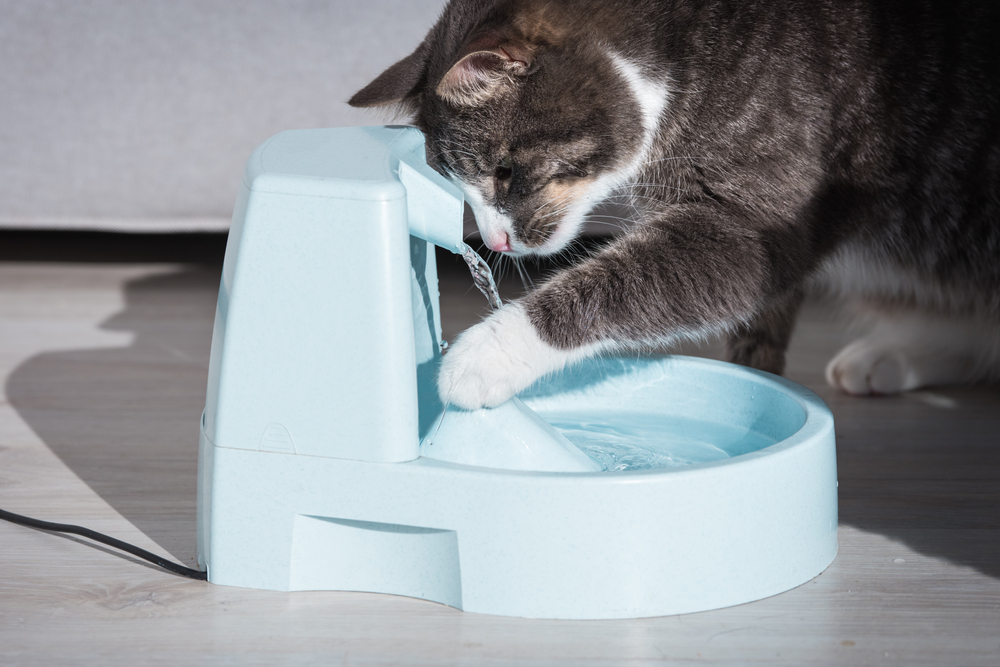
Many cats are fascinated by moving water, and they may be more likely to drink from a fountain. Numerous options are available online or at your local pet store. Ensure you clean the fountain regularly and change the filter as the manufacturer directs.
#7: Choose an appropriate cat bowl
Your cat may avoid drinking if they don’t like their water bowl. To ensure you provide your whiskered friend with an acceptable water bowl, consider the following:
- Material — Plastic water bowls can absorb odors even if you thoroughly wash them each day. Metal bowls can taint the water’s flavor. To avoid these issues, serve your feline friend’s water in ceramic or glass bowls.
- Conformation — Whisker fatigue (i.e., whisker stress) is a condition cats can experience when their sensitive whiskers repeatedly touch a surface. Drinking and eating from a bowl that is too small or too deep can cause your frisky feline to develop whisker fatigue. To avoid irritating your cat’s whiskers, serve their water and food in large shallow bowls.
#8: Add flavor to your cat’s water
Your cat may drink more if you add a little extra zip to their water such as chicken or fish poaching water or the liquid from canned tuna in spring water. Avoid adding salty liquids, milk, and any solution, such as stock, that contains onions and garlic, which are toxic to cats.
If your cat becomes dehydrated because they refuse to drink, contact our LaGrange Veterinary Hospital team. We can replace your frisky feline’s fluid deficits and recommend additional effective strategies to encourage their water intake.



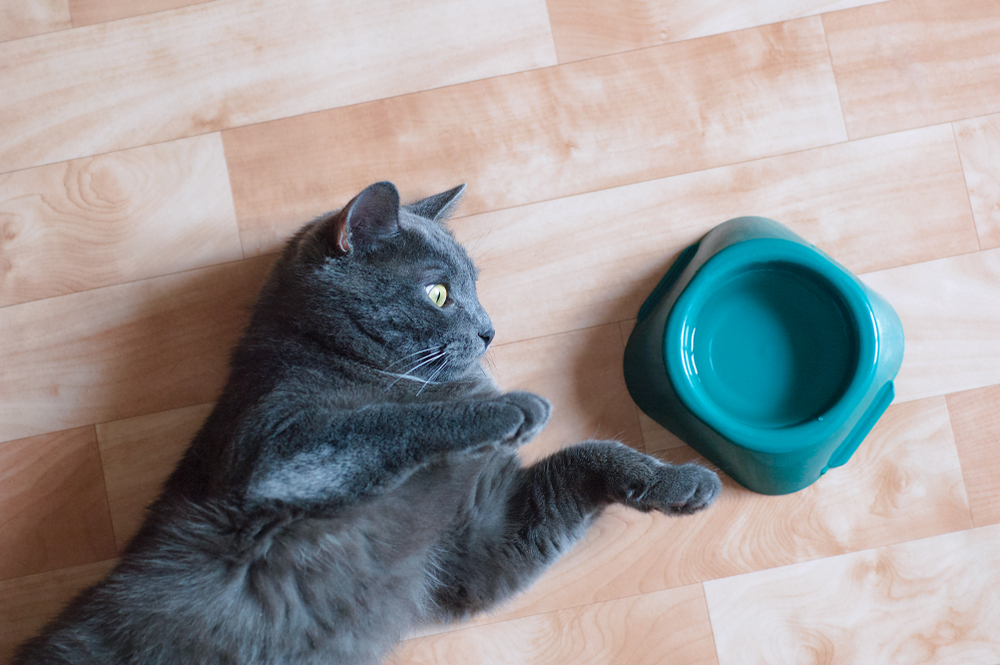
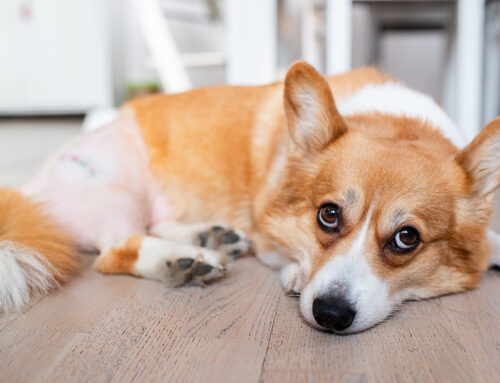

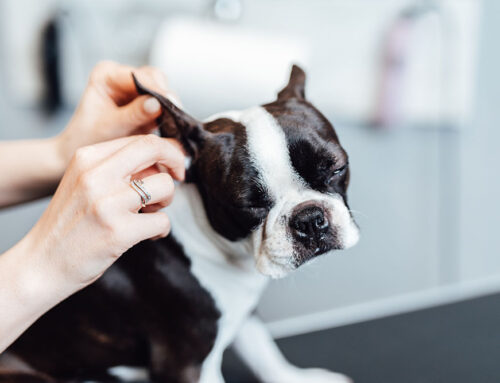
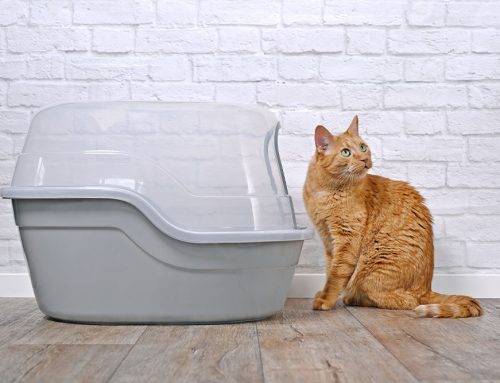
Leave A Comment